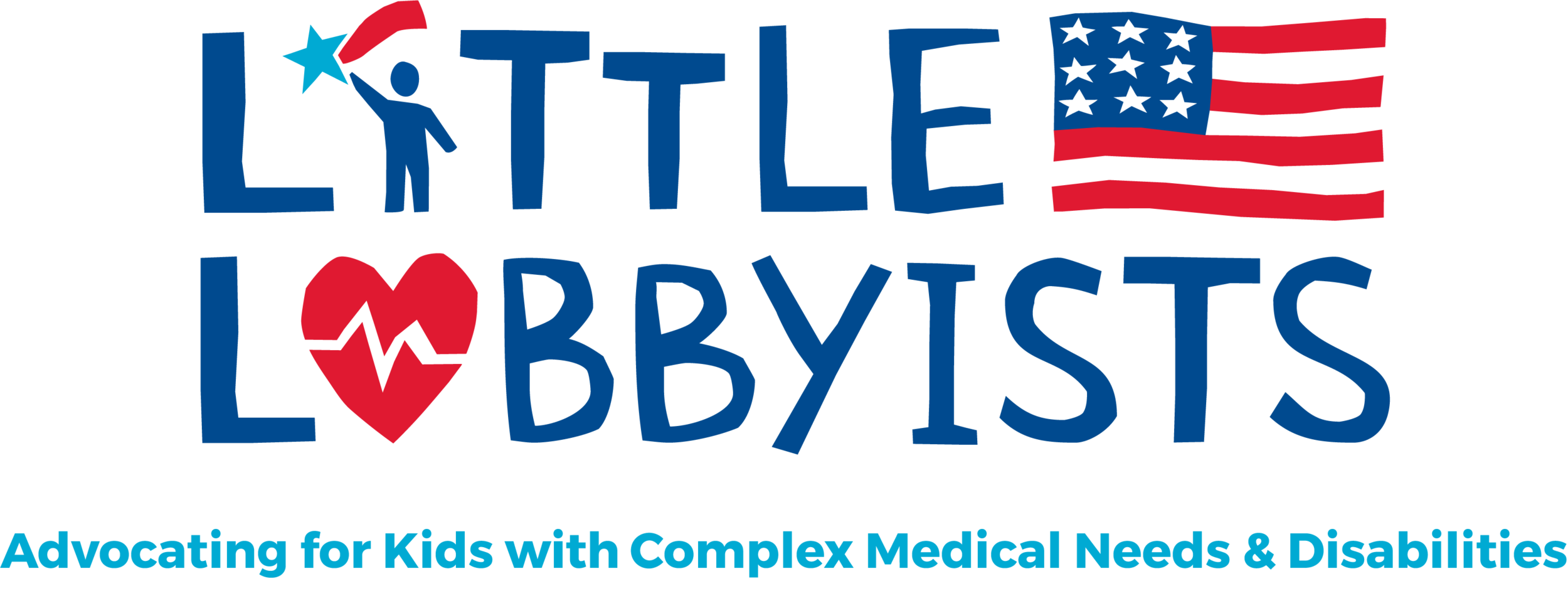I Love the Sound of My Daughter's Voice (by Stacy Staggs)
Emma Staggs, a young girl with blond braids and a blue dress with a watermelon slice pattern, holds her AAC device in its bright pink case. Emma is seated on play equipment in a backyard.
I love the sound of my daughter's voice. Like any mama who adores her kiddos, the sweet, small sound of their voices are music to my ears.
My twin girls, Emma and Sara, will celebrate their 7th birthday later this month. They are happy, rambunctious, curious and remarkably loud! Our family, like millions of others across the country, is navigating distance learning in all its online glory. Also, like millions of families whose kids have complex medical needs and disabilities, we have been at home since March. Our visits with aunts, cousins, and grandparents have been via video calls. In a world that leans into technology, we are more immersed than most, for an incredibly important reason: Emma speaks through an Augmentative and Alternative Communication (AAC) device.
Among the list of pre-existing conditions that arose from extremely premature birth and prolonged intubation (months on a ventilator), Emma has idiopathic bilateral vocal cord paralysis (iBVCP), which means that her vocal cords are essentially stuck together, so they do not produce sound. She has a breathing tube and a feeding tube that were surgically implanted when she was 3 months old. These procedures saved her life and offered a path to hospital discharge so I can raise her in our home, with our family.
Apart from a breathy exhale or gurgly, boisterous belly laugh, she doesn't produce any sound. And sure, she's under the care of multiple specialists. There is always hope and, in fact, 75% of children with iBVCP gain their voice by age three. Can you imagine? They just wake up one day, singing like a bird! Again, Emma and her sister will be 7 this month, so she is part of the remaining 25% that haven’t gained their natural speech.
My husband and I have done what all parents do for their children. We find the tools they need to meet their fullest potential. For Emma, and kids with a similar diagnosis, a big part of that is her AAC with voice output. It looks like a pumped-up iPad, but with specialized hardware and software and a pink protective case so she can safely carry it everywhere she goes. It has a series of pages, with grids and pictures on each page. When she taps each individual grid, the software causes an approximation of a young girl’s voice to speak the word associated with the picture. Thankfully, technological advances allow the voice to sound more assimilated and much less robotic. It literally sounds like her (or what I imagine to be her voice)!
Emma’s AAC device, which resembles an iPad and is in a pink case. The screen displays icons for various colors, and below it is a sketch pad on which Emma has drawn colorful flowers with markers and written her name.
Here's the thing, it's AWESOME! As she learns to navigate this tool, her world expands. She can better communicate her wants and needs, her likes and dislikes. She can touch buttons that sing her favorite songs in sections. She can greet her family and nurses, tell us when she wants to take a break or needs her breathing tube suctioned. It even helped with potty training! When her teacher asks questions during online learning, she can respond. In conjunction with American Sign Language (ASL), she is included in the learning and social exchanges that happen throughout the school day.
As she grows, the device will grow with her, which is fortunate because it came with a $6,000 price tag, covered by Medicaid after months of paperwork, letters of medical necessity, and therapeutic justification from her therapists. The difficulty is worth it: I think most of us agree that communication is a necessity, a human right, and something we should make all attempts to provide. I would argue that vulnerable and marginalized people need to use their voices even more.
We are preparing Emma to be a successful self advocate. On that glorious day when her proficiency, tools and abilities to speak her wants and needs to a society with the grace to listen, nobody will be more relieved or excited than her family.
But I have to admit, my favorite part is when she pushes the button that gives the voice command to say, "Hi Mommy. I love you." That is music to my ears.
Stacy Staggs is Little Lobbyists’ National Director of Community Outreach and its North Carolina Chapter Leader.


